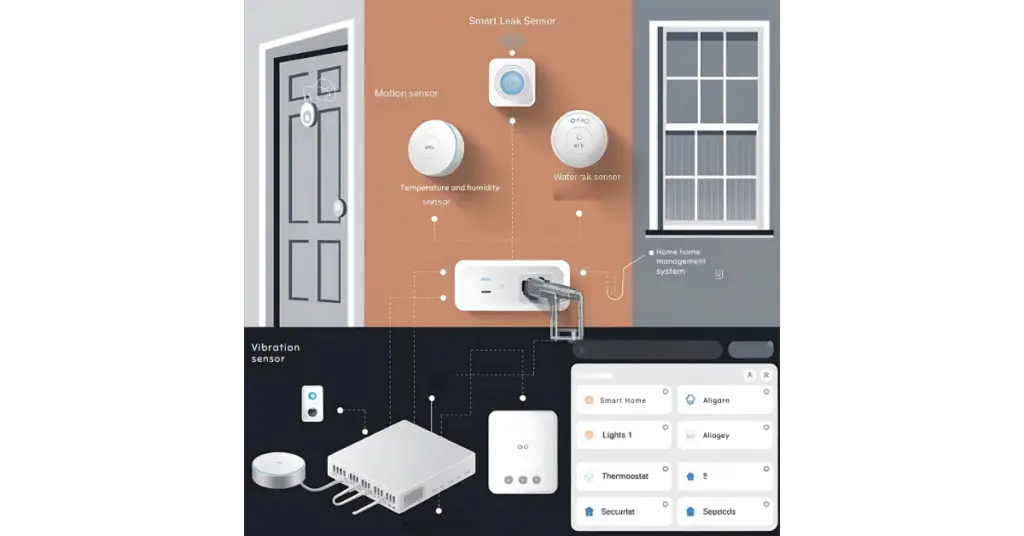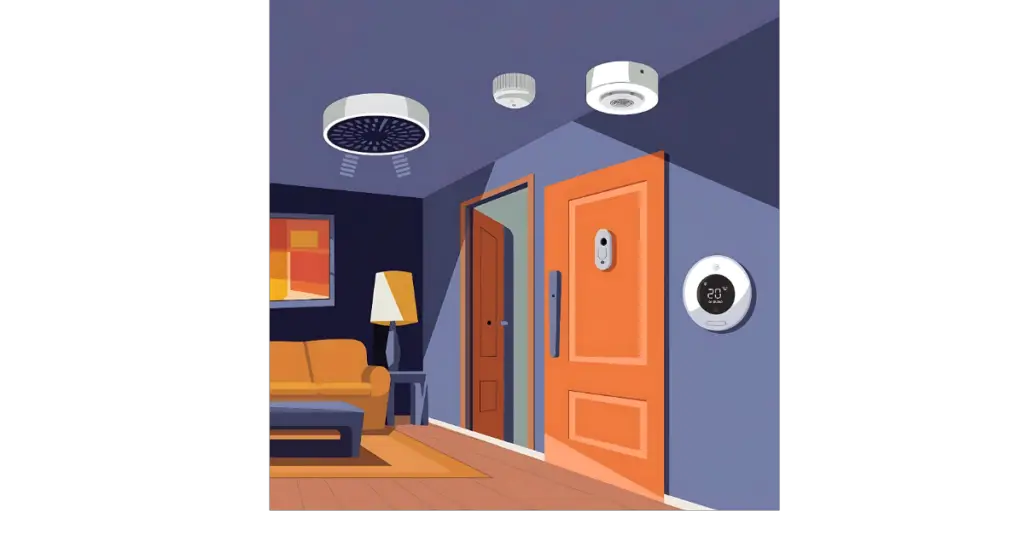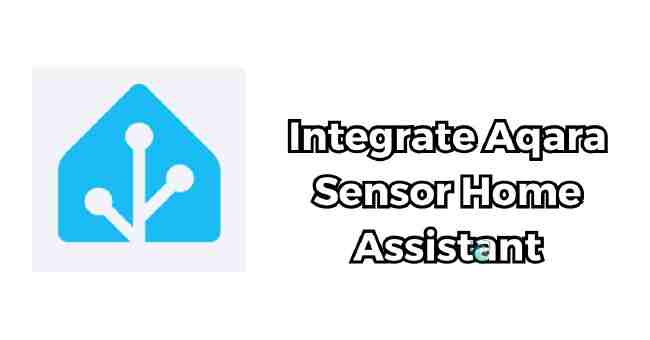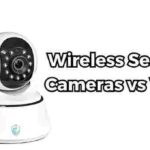Table of Contents
Are you wondering how to integrate aqara sensor home assistant together? Yes, As a homeowner to integrate Aqara sensors with Home Assistant, you need to have an Aqara hub (such as the M2 hub) and a Home Assistant instance running on your network.
Imagine waking up to a home that knows your habits and preferences, orchestrating your morning routine to maximize comfort and convenience.
As you shuffle sleepily to the bathroom, motion-activated lights glow to guide your path.
The temperature adjusts to your preferred level as you enter, and your favorite upbeat playlist starts playing to help you wake up.
This dream of an intuitive, personalized smart home experience can become reality with Home Assistant – an incredibly powerful and customizable open-source automation platform.
Home Assistant weaves together all your Internet-connected devices into a magical symphony of seamless automation and control.
But even the most adept conductor needs talented musicians in the orchestra.
This is where Aqara sensors enter the scene, acting as the eyes and ears that provide Home Assistant the contextual data it needs to understand what’s happening in your living space.
In this comprehensive guide, we’ll explore:
- What makes Home Assistant such a versatile smart home platform
- An introduction to Aqara and its wide range of sensors
- How to integrate Aqara sensors into Home Assistant
- Powerful automation possibilities unlocked by this integration
- Best practices for placement and usage of the sensors
- Troubleshooting tips for optimal performance
Whether you’re new to home automation or a seasoned smart home pro, this guide aims to help you unlock the magical potential of integrating Aqara sensors into Home Assistant.
Let’s dive in.
What Makes Home Assistant Special?
Before we introduce Aqara sensors, it’s important to understand what makes Home Assistant such a uniquely powerful smart home platform.
Unlike proprietary systems offered by big brands, Home Assistant offers incredible advantages:
Open Source Software:
Home Assistant is open source, meaning anyone can freely view, modify, and distribute the code.
This drives rapid innovation from its vibrant community of enthusiasts and developers.
Customization and extensibility are core philosophies rather than afterthoughts.
Local Control:
Your automation flows are processed locally on a device you own, keeping your data private and secure.
No cloud dependency means no disruptions when the internet goes down.
Hardware-Agnostic:
Home Assistant supports over 2,000 different smart devices and services out of the box.
Using integrations and custom components, it can connect virtually any hardware under the sun, allowing you to pick the devices you love without vendor lock-in.
Flexibility & Depth:
With its open nature, customizable architecture and helpful community, the possibilities with Home Assistant are endless.
As your needs grow, intricate automations, scripts and integrations allow your home to evolve into a personalized smart system reflecting your lifestyle.
Now that we’ve seen why Home Assistant makes for such a versatile foundation, let’s explore the instrument that brings the harmony to life – Aqara sensors.

Introducing Aqara Sensors
Aqara is a sub-brand from Chinese electronics giant Xiaomi that specializes in smart home devices.
Their sensors pack impressive hardware quality into compact, affordable packages making them extremely popular for home automation projects.
Let’s get to know the conductor’s talented orchestra by briefly introducing common Aqara sensors:
Motion Sensor
Aqara’s motion sensors use passive infrared technology (PIR) to reliably detect movement within their wide 120° field of view, at a maximum range of 6 meters.
Their versatility and affordable price make them extremely popular for automating lighting, security systems, notifications and more based on occupancy within a room or area.
Door & Window Sensor
These handy contact sensors magnetically attach onto doors, windows, cabinets or drawers to monitor open/closed status.
They send real-time alerts to Home Assistant when opened, allowing automations like notifications, alarms, automatic door closing etc.
Their tiny size makes them very discreet for monitoring anything that can open/close without being visually distracting.
Temperature Sensor
Aqara’s ingenious temperature sensors accurately measure ambient temperature between -40°C to 125°C and humidity from 0% to 100%.
They transmit readings to Home Assistant every few minutes, allowing automations like climate control, alerts about extreme temperatures, regulator of devices like humidifiers etc.
Water Leak Sensor
Every homeowner’s nightmare is water damage from undetected leaks. Aqara’s water leak sensors detect water and transmit immediate alerts to Home Assistant for triggering alarms, water shut off valves and notifications.
Their small size allows discreet placement in leak-prone areas like under appliances to provide round-the-clock monitoring.
Vibration Sensor
These sensitive devices detect vibration or movement on objects they are secured to, sending real-time alerts to Home Assistant.
Common applications are placement on windows, doors or valuables to detect break-in attempts. Their sensitivity is tunable based on use case.
Motion Sensor (Accelerometer variant)
Aqara also offers an advanced motion sensor variant with a built-in accelerometer for more precise occupancy detection vs the regular infrared (PIR) version.
This allows accurate confirmation that humans triggered the motion rather than ambient sources like sunlight changes. It transmits 3-axis (X/Y/Z) orientation data for advanced usage scenarios.
Light Sensor
The aptly named light sensor detects ambient light levels from 0 to 32000 Lux, triggering automations based on thresholds – for example turning on lights at sunset or closing automated shades when a room gets too bright.
Air Quality Monitor
Indoor air quality matters greatly for health and comfort. Aqara’s specialized air quality monitor accurately measures particulates, humidity, temperature and TVOC levels, providing actionable insights into pollutants.
This allows smart ventilation control, air purifier automation, health advice and long term air quality trend analysis.
While not exhaustive, this list covers some of the most popular Aqara sensors that become powerful orchestral instruments when integrated into Home Assistant.
The key is converting their raw data into intuitive automations to enhance your living experience.
Now let’s explore that magic.
Integrating Aqara Sensor Home Assistant

To unlock the automation potential of Aqara sensors in tandem with Home Assistant, we first need to link them together – teaching Home Assistant to recognize and ingest data from the sensors over the network.
The method varies slightly based on your existing setup:
Aqara Sensors with Hub (M2/E1)
If you have an [Aqara Hub M2] or [Aqara Hub E1], the integration process is straightforward since these hubs handle communication between the Zigbee sensors and Home Assistant.
Steps:
- Pair sensors to hub as per hub documentation
- Connect hub to same network as Home Assistant device
- In Home Assistant, enable the Aqara Integration (Configuration > Integrations > Aqara)
- Follow prompts to link hub. All paired sensors will automatically appear.
This is by far the most reliable and consistent way to add Aqara sensors into Home Assistant.
Aqara Sensors with Xiaomi Gateway
The [Xiaomi Gateway 3] works with select Aqara sensors like temperature, motion etc. This can be a cost effective way to link them with Home Assistant.
Steps are similar:
- Pair sensors to gateway using Xiaomi Home app
- Ensure gateway and Home Assistant are on same WiFi network
- In Home Assistant, enable Xiaomi Mi Gateway integration
- Follow linking process to add gateway and paired accessories
Do note that device support on the Xiaomi Gateway is limited compared to Aqara’s native offerings.
Zigbee Hubs / Coordinators
Already have a sophisticated Zigbee setup comprising of hubs like ZHA, zigbee2mqtt or deCONZ? Great news – you can directly pair compatible Aqara sensors to these systems following their documentation.
Once paired, the sensors will automatically appear in Home Assistant for control and automation.
This method offers the most customization but involves deeper Zigbee know-how.
Aqara over WiFi
Select Aqara devices like the FP1 PIR Motion Sensor also offer standalone WiFi connectivity without needing a hub.
You can connect them to your WiFi network and link directly with Home Assistant over IP.
While limiting compared to the Zigbee based options, WiFi can help eliminate range constraints in some use cases.
Regardless of which method you pick to link Aqara hardware, the powerful Home Assistant integration empowers easy control, configuration and automation as we’ll see next.
Unlocking Next-Level Automation with Aqara + Home Assistant
Now for the most exciting part – exploring powerful home automation routines unlocked by the deep integration between Aqara’s versatile sensors and Home Assistant’s incredible automation engine.
By converting raw sensor data into intelligent logic, we can craft immersive experiences that truly transform daily living. Let’s discover some possibilities:
Occupancy-Based Lighting Magic
Aqara’s motion and contact sensors provide eyes into room occupancy. We can leverage this to automatically control lighting for safety, convenience and ambiance. For example:
Automatically turn lights on when motion is detected in a room
Fade lights gently off 5 minutes after a room is vacated
Subtly dim living room lights when watching TV after dusk
- alias: Dim living room lights for movie mode
trigger:
- platform: state
entity_id: binary_sensor.living_room_motion
to: 'off'
condition:
- condition: state
entity_id: sun.sun
state: "below_horizon"
action:
- service: light.dim_to_level
entity_id: group.living_room_lights
level: 30 # customize as needed
mode: single # prevent repeat triggers
These are just a few possibilities – the options are vast for crafting personalized scenes tailored to your lifestyle.
Climate Control Superpowers
Temperature and humidity data opens amazing climate automation potential:
- Notify when room gets too hot/cold
- Turn on AC/heater automatically if uncomfortable
- Control dehumidifier based on humidity readings
- Close windows if it gets too windy
- Regulate temperature as you wake up / return home
By setting thresholds and crafting intelligent responses, Aqara sensors allow climate control superpowers far beyond what traditional thermostats can offer.
Water Leak Notifications & Prevention
Water damage is a scary prospect – but Aqara leak sensors empower preventative monitoring and lightning fast response times:
- Get notified immediately via Home Assistant notifications on detection of any water leak
- Automatically shut off water at the mains by integrating smart water valves
- Sound an audible alarm via smart speakers or alarms
- If leak persists, trigger pumps/wet vacuums to drain the water before catastrophic damage
Water is necessary but leaks shouldn’t dampen your peace of mind. Aqara sensors provide an always-vigilant monitoring solution.
Enhanced Intruder Detection & Alerts
Vibration and contact sensors allow physical security automation previously impossible:
- Get alerted if windows/doors are opened while you’re away
- Detect attempts to break or tamper any protected entry points
- Integrate sirens, loud music or fake TV ambiance to deter intruders
- Activate security cameras to record activity and notify authorities with video evidence
You can even get innovative by monitoring vibration on valuables, mailboxes etc. to outsmart petty thieves.
Sunrise & Sunset Automation
Light sensors provide automation potential based on ambient brightness:
- Close automated blinds when room gets too bright
- Turn on porch lights automatically at dusk
- Have gentle lights fade on as sunrise signals morning arrival
- Ensure perfect movie ambiance by dimming lights at sundown
This transforms static lighting into a magical experience complementing daily life rhythms.
Air Quality Notifications & Ventilation Control
Indoor air quality has a huge impact on comfort, health and cognitive abilities. Leverage Aqara’s air quality monitor to stay informed and ensure your home breathes easy:
- Get notified when pollution crosses uncomfortable thresholds so you can take action
- Graph long term trends to identify patterns and optimize environments
- Activate air purifiers, fans or smart vents automatically based on live readings to maximize air quality at all times
This empowers corrective actions before air quality degrades without constant mental bandwidth.
As you can tell, these are just a tiny sample of the amazing possibilities.
Home Assistant’s incredibly versatile engine allows even more complex multi-condition automation leveraging diverse data sources for scenes limited only by your imagination.
Start with the basics and evolve over time.
Now let’s shift gears to deployment best practices once you have everything linked up.
Optimizing Aqara Sensor Placement
To compose a perfectly harmonic smart home, strategic sensor placement is key. Their positioning impacts the reliability of automation triggers as well as accuracy of climatic measurements.
Follow these guidelines tailored to different sensor types when installing your Aqara hardware:
Occupancy Sensors
Best practices for the motion and contact sensors:
- Place motion sensors in frequently occupied rooms for light automation
- But avoid high traffic areas like hallways to minimize false triggers
- Focus motion sensors to cover seating areas and avoid triggers from passersby
- For large rooms, consider multiple sensors for complete coverage
- Use contact sensors for doors, windows, cabinets accessed daily.
Climate Sensors
Optimizing location is crucial for accurate temp/humidity readings:
- Avoid direct sunlight, drafts and radiant heat sources
- Centrally located in regularly occupied rooms at ~ head level
- Not close to HVAC vents blowing hot/cold air
- Enclose outdoor sensors properly to shield from rain/wind
Water Leak Sensors
Maximize protection by identifying leak prone spots:
- Under sinks, washing machines, water heaters
- Near appliances with water lines like refrigerators
- Basements and storage rooms with risk of flooding
- Ensure contact with floor for earliest possible leak detection
General Best Practices
Some general guidelines spanning all sensors:
- Place within reliable range of your Zigbee hub/coordinator (30-50ft)
- Avoid placement behind thick walls or metal barriers
- Consider range extending repeaters if signal is borderline
- Ensure batteries are easy to access for replacement
Get creative in your placement while following these guidelines for best results.
Troubleshooting & Maintenance of Aqara Sensors
While Aqara hardware is generally reliable, the underlying Zigbee protocol can be sensitive to environmental constraints. Follow these troubleshooting and maintenance tips:
Connectivity & Range Issues
If your sensors show unavailable status or automation becomes unreliable:
- Check if they’re within reliable range of the coordinating hub (<50ft)
- Switch Zigbee radio channel via hub/coordinator if neighboring WiFi interference suspected
- Use a repeater or extender to bridge longer distances between sensors
Battery Life & Replacement
Depending on placement, batteries can drain faster:
- Set device tamper alerts to notify when removed for battery swap
- Enable battery level notifications for proactive rather than reactive replacement
- For hard to access sensors, stick to long life lithium batteries
- Consider a maintenance schedule every 2 years for hassle-free upkeep
Firmware Updates
Aqara and Home Assistant both periodically release firmware updates to improve device compatibility, bugs and features.
- Always update hubs/coordinators when notices are received in the app
- Replace hub batteries before firmware updates to prevent mid-update crashes
- Re-pair sensors if they start acting flaky after significant Home Assistant upgrades
Community Resources
Home Assistant forum and Reddit are invaluable resources for troubleshooting specific issues not covered above:
- Search for your device + error observations to find relevant troubleshooting threads
- If issue persists, post details about your setup for tailored troubleshooting help
- Consider consulting with installer/integrator if you did not setup system
Don’t hesitate to leverage the helpful community for Aqara-specific queries either.
FAQs
Can I Use Aqara With Google Home?
Yes, Aqara sensors can be integrated with Google Home in a few ways:
- Link Aqara hub to Home Assistant, then enable Google Assistant integration to control sensors via voice commands.
- Use native Google Home integration if your Aqara sensors directly connect via WiFi, like the FP1 motion sensor.
- For advanced voice control leverage Webhooks Google Assistant integration to build custom commands activating automations.
So Google Home voice control is quite feasible with Aqara sensors through Home Assistant.
Does Aqara Work Offline?
Aqara hubs and sensors fundamentally depend on internet connectivity to communicate with the mobile app and Home Assistant cloud.
However, functionality may be sustained temporarily during internet outages if the hub/coordinator is running on local network and has cached device connectivity. But extended offline functionality is fundamentally limited.
Consider battery-powered Zigbee remotes or non-cloud reliant solutions if 100% offline operation is mandatory.
Can Aqara Work Without Wi-Fi?
Aqara sensors communicate via the Zigbee protocol to their hubs and do not need home WiFi connectivity directly.
But most Aqara hubs like the M2 need wired or WiFi network connectivity for communication with the cloud and Home Assistant.
So practically, you cannot use Aqara sensors reliably without WiFi connectivity to the internet.
Though Temporary sporadic connectivity loss may be tolerated by onboard caches.
How Accurate Is The Aqara Temperature Sensor?
Tests indicate around 0.4°F (0.2°C) deviation between multiple Aqara temperature/humidity sensors under steady state when calibrated and strategically placed away from direct heat sources.
This meets accuracy requirements for most home climate control applications.
Long term drift can slightly skew readings requiring occasional recalibration. But overall highly impressive accuracy for the price point compared to commercial equivalents.
Does Aqara Work With Apple?
Yes, there is an Aqara Home app available also for iOS devices to supplement integration platforms likes Home Assistant.
It provides mobile controls, automations with Apple Homekit compatibility.
Apple Homekit also directly integrates with many newer Aqara devices like the Hub M2, Water Leak sensor and Door Lock allowing Siri voice commands.
So iOS focused customers have primary app support and some native smart home integrations. But functionality still lags behind Alexa and Google Home.
How Many Aqara Sensors Can I Connect To Home Assistant?
One of Home Assistant’s strengths is its ability to integrate a large number of devices.
Most Zigbee networks can reliably handle over 50 devices, while some can scale even higher through careful bandwidth optimization.
For Aqara sensors specifically communicating through the Aqara Hub M2, users have integrated well over 50 devices without issue.
The Aqara hub utilizes Zigbee’s mesh networking capabilities, allowing child devices to route through each other to reach the hub – thus extending the range and capacity of the network.
So in most typical homes, you’re unlikely to hit any limitation on sensor count when integrating with Home Assistant.
Focus more on which sensors provide the most value to your application rather than arbitrary limits.
Plan out placements and scale up gradually rather than deploying arbitrarily high number of sensors in one go.
What Are Some Creative Ways I Can Use Aqara Sensors Beyond Basic Automation?
The versatility of Aqara sensors combined with Home Assistant’s power provides endless possibilities beyond basic lighting and climate control automation.
Here are some creative ideas to explore:
- Monitor vibration on valuables or confidential files to detect unauthorized access
- Create a remote wildlife camera by triggering photos from the door sensor or motion detector
- Detect broken pipes and clogs by analyzing water flow sensor data
- Improve pet health by correlating activity data from the motion sensor to exercise
- Extra security by placing contact sensors on restricted cabinets & closets
- Detect car arrival by placing a door sensor or motion detector in your garage
- Track room occupancy patterns over time with motion and door data for space optimization
- Improve sleep quality by logging temperature and light data in the bedroom
Explore integrations with other Home Assistant compatible platforms like Google Drive, security systems, petitions etc.
The possibilities are endless – it’s all about identifying what environments you want to make “smarter” and picking the right sensors to provide the contextual clues needed.
Is It Possible To Use Aqara Sensors Without The Official Hubs?
Absolutely – one of Home Assistant’s strengths is its ability to integrate virtually any sensor over Zigbee using alternative coordinators such as USB radios.
Popular options include:
- ZHA integration using a USB radio like Sonoff Zigbee 3.0 USB Dongle
- zigbee2mqtt project using CC2531 USB stick
- deCONZ integration via ConBee or RaspBee coordinator
These radio/hub alternatives fully support Aqara’s Zigbee based sensors. You simply pair the sensors according to respective documentation, and they will appear automatically as entities in Home Assistant.
This approach needs some familiarity with Zigbee standards but offers more flexibility and customization potential for power users.
It also allows mixing other Zigbee device makes/models easily.
Can I Use Aqara Sensors With Proprietary Hubs Like SmartThings, Hubitat etc?
Potentially yes – most major home automation hubs support popular Zigbee devices like Aqara as they follow open standards.
For example, many users have integrated Aqara hardware successfully with hubs like Samsung SmartThings, Hubitat Elevation, ZipaMicro, OpenHAB and more after pairing them over Zigbee.
These can act as alternate integration paths into Home Assistant by enabling their respective platforms rather than direct USB connectivity.
Just ensure to consult hardware compatibility documentation before purchasing the hubs or sensors.
What Are Some Troubleshooting Tips For Aqara Sensors Losing Connection?
Some common reasons for Aqara sensors losing connectivity with Home Assistant and potential remedies:
- They might have moved out of reliable range – ensure all sensors are within 50 ft. of coordinator.
- Nearby WiFi interference can disrupt Zigbee connectivity – change hub radio channel.
- Physical barriers like metal appliances might be blocking signals – reposition devices.
- Try rebooting sensors and coordinator for a fresh pairing.
- Battery depletion can cause connectivity loss – check & replace batteries.
- Upgrade Home Assistant / hub / device firmware to latest releases.
- Zigbee networks have device limits – prune unneeded devices and optimize bandwidth.
For persistent issues, leverage the active Home Assistant community forums for sensor specific troubleshooting advice tailored to your observed symptoms.
What Additional Hardware Is Required For Integrating My Aqara Setup?
If you purchased Aqara sensors bundled with their native hub like the M2 or E1, no additional hardware is required.
Just connect the hub to your home network and integrate it with Home Assistant as per documentation.
For other setups, you will additionally need:
- Xiaomi Gateway: Xiaomi Gateway 3 and compatible Aqara sensors
- Zigbee USB dongle: Any Zigbee coordinator compatible with Home Assistant + Aqara sensors
- Home Automation Hub: Respective hardware hub + compatible Aqara sensors
- WiFi Aqara Models: No extras for sensors with native WiFi
So choose your integration method first before procuring additional components. Plan for any range extenders, power adapters, enclosures etc. as well during initial hardware planning.
Conclusion
And with that, we’ve covered the full orchestration process of integrating Aqara’s versatile sensor lineup into the incredibly powerful Home Assistant automation platform.
Here are some key summary takeaways:
- Aqara offers a rich diversity of sensors to monitor various environmental metrics at affordable pricing
- Home Assistant provides endless customization and control potential with no vendor lock-in
- Linking sensors to Home Assistant unlocks game-changing automation potential
- Strategic placement optimizes functionality for lighting, climate, security use cases
- Observant troubleshooting and preventative maintenance ensure sustained operation
I hope this guide offered valuable insights into harnessing Aqara sensors effectively within Home Assistant deployments of all scales and complexities.
The key is dreaming up possibilities and crafting tailored experiences that best fit your lifestyle.
What kinds of environments would you love to optimize with sensor-driven automation?
Which Aqara sensor excites you the most in terms of capabilities? I’d love to hear your vision for a dream smart home in the comments below.





Pingback: 10 Top Smoke Detector Sensors for Home Safety in 2025 - Home Protexs